Do I Really Need Compression Socks? 5 Signs to Look For
If you’ve ever suffered from swollen ankles and feet, felt pins and needles when getting up from sitting for a long period of time, or started noticing spider veins growing on your lower limbs, you’re probably looking for some way to address this.
You may be wondering: do I really need compression socks?
To get the answer, it pays to check out some common examples of people who get the most benefits from compression, as well as the common signs that you may need these socks in your life. In this article, we’ll also cover how to choose a pair and how to evaluate your need for compression therapy.
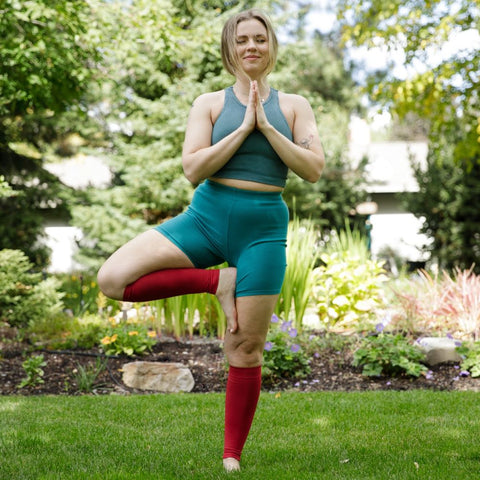
Who Needs Compression Socks?
A pair of compression socks can be recommended or even prescribed by doctors to patients recovering from surgery or to those who suffer from certain medical conditions. But they’re good in a lot more cases than that. Whether you practice a lot of sports or travel a lot without the opportunity to move around and keep a good blood flow going, compression socks can offer some great benefits. Here are some frequently happy compression sock wearers.
Athletes and Fitness Enthusiasts
When we play sports, run, or hike, our muscles are challenged and we experience small tears in the muscle, as well as a multitude of micro vibrations through the legs. The latter come about while jumping and landing on hard ground, or simply from running (especially on roads, where the ground is less forgiving!). As for DOMS (delayed onset muscle soreness), that’s that “good” kind of pain you get from working out.
To help athletes recover quicker and to reduce pain and swelling after exercise, compression socks are easy and practical. You can take them with you anywhere, wear them for as long as you feel like it, and enjoy a gentle massage on your lower limbs. And they’ve been proven to help reduce DOMS and improve future athletic performance during the recovery phase.
Pregnant Women
Expecting mothers often have the added pressure of swollen ankles, heavy-feeling legs, and sore feet. While rest and relaxation can help after a busy day, it’s important to try and prevent swelling and discomfort, while also supercharging your recovery efforts.
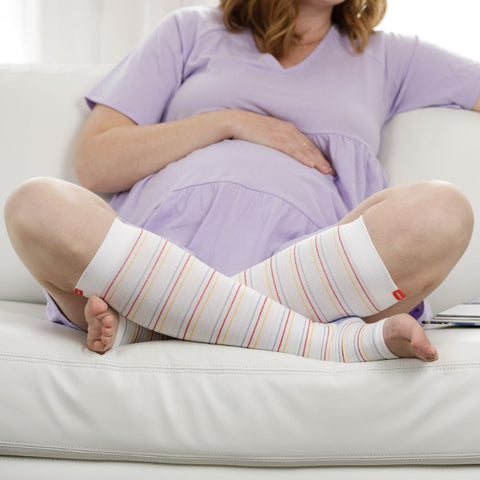
Wearing compression socks helps boost blood circulation from the lower limbs back towards the heart. Graduated compression is especially helpful in this situation, because the socks are tighter at the ankles and looser towards the knees, which guides the blood upwards.
People with Circulatory Issues
Thanks to their beneficial effects on blood flow in the lower limbs, compression socks are often prescribed or recommended by medical experts to those who are diagnosed with circulatory issues.
In the case of fluid retention and swelling or edema, compression socks can provide a welcome massage and support blood flow in the affected area, reducing the swelling as a result. For their help circulating blood through the legs, compression socks are also good for varicose veins, venous insufficiency, and beyond.
Frequent Travelers
When you sit still for long periods of time, it’s normal for blood to pool around the ankles because of gravity. This is often the case when you’re traveling long distances, such as on a plane, where there is hardly any room to move around.
While it’s always good to make a habit of getting up and stretching your legs a little, even doing a few exercises when you’re on a plane, you can also reach for a pair of compression socks to make your journey more comfortable. They’ll prevent swelling and achy legs and can help you feel more energized when you land.
People Who Stand or Sit for Long Periods
Just like sitting on a long-haul flight, spending hours in front of a computer screen without getting up to move can be detrimental to the wellbeing of our legs and feet. To avoid swollen ankles and that feeling of heavy legs after a long day at the office, you can wear compression socks that will keep blood flowing and reduce any discomfort.
The same is true for standing around a lot. Gravity simply forces blood to pool around the ankles and will lead to swelling and pain. At sales conferences, in hospitals, or schools, wearing compression socks prevents any discomfort from settling in and keeps feet and legs fresh all day long.
Common Signs You Need Compression Socks
Of course, you may or may not fall into one of these categories and think you’ve never even considered resorting to compression therapy or to wearing socks to prevent any discomfort. That’s understandable, especially if you’ve never felt some of the signs that can suggest it’s time to get some benefits from compression socks.
So, how do you know you need them? Here are some useful indicators.
Leg Pain
If your legs regularly get sore after exercising or walking long distances, that’s absolutely normal. You’re experiencing delayed onset muscle soreness and compression socks can help relieve the discomfort while boosting blood flow to the muscles. This will reduce recovery time until your next workout.
You might also have pain in the lower limbs as a result of swelling or sitting still for long periods of time. Through their gentle massage of the area below the knee, compression socks can relieve this and make you feel a lot more energized and comfortable.
Restless Legs
Restless legs syndrome can be really frustrating and uncomfortable. It refers to the urge to move your legs after sitting or lying down for a long time. Wearing graduated compression socks can help reduce the symptoms of restless legs by stimulating your blood circulation and preventing any swelling and discomfort from settling in.
Swelling and Edema
Thanks to an improvement in blood flow thanks to compression socks, you are less likely to suffer from swelling and edema in the lower legs. Blood flows constantly through the legs and back up to the heart, without any pooling which can cause swelling. Additionally, compression socks gently massage the lower limbs, which is also beneficial for reducing swelling.
Burning, Tingling, or Numbness
When you feel a tingling sensation in your lower legs, or if your legs go numb after sitting or lying down for a long time, this is all caused by poor circulation. Especially when you’re not moving around, blood can stop flowing freely through the legs, which in time, can cause various medical issues. Compression socks prevent this from happening since they boost blood flow, ensuring you don’t have to deal with “pins and needles.”
Long Recovery Times
Compression socks are a game changer when it comes to athletic performance. Thanks to the beneficial massage and blood flow stimulation they provide, athletes can reduce the time it takes for them to feel truly recovered after a tough workout. This is because muscles receive nutrients and oxygen from the blood quicker and more efficiently, while the gentle massage of graduated compression socks prevents swelling and discomfort, while soothing the legs.

This benefit is also evident for those recovering from an injury. After ankle sprains or Achilles tendonitis, wearing compression socks provides some extra support for the lower legs and helps fight inflammation and soreness. And, if you’re recovering from surgery, compression socks also support your journey back to health, preventing swelling and soreness from lack of activity.
Choose the Right Compression Socks for You
To make sure you get the benefits from your compression socks, you need to familiarize yourself with a few simple facts and choices.
Compression Level
Compression socks are not all the same. The level of compression tells you how tight they will be on the legs and should be chosen based on your personal preference and medical conditions:
- 15-20 mmHg - moderate pressure level, ideal for every day and occasion and for first-time users;
- 20-30 mmHg - moderate to firm, usually recommended by a healthcare professional for relieving the symptoms of edema, deep vein thrombosis, or pre- and post-surgery;
- 30-40 mmHg - firm, prescribed by doctors for specific health concerns.
We always recommend starting with moderate pressure socks and seeing how you feel before moving upwards.
Material
Depending on the activity you wear your socks for, you may want to choose more breathable fabrics, moisture-wicking, or extra warm.
VIM & VIGR compression socks come in a range of materials to suit your lifestyle and the weather conditions:
- Cotton is great for everyday wear and you can combine stylish socks with your outfits for work or relaxing after a workout;
- Nylon is thin and flexible and can be great for workout socks or on a hot day;
- Merino wool is warm and dry, keeping feet in excellent condition in winter, but also breathable and moisture-wicking for wearing on summer hikes;
- Moisture-wick Nylon combines the stretchy, light weight of Nylon socks with extra moisture wicking to keep feet dry.
Sizing and Fit
Compression socks need to be tight enough to deliver benefits, but not so tight that they risk cutting off your circulation. You want to avoid them rolling down your legs, bunching, and becoming uncomfortable in general.
Use a sizing guide and measure the circumference of your calf muscles to ensure the best fit. Then, follow our instructions about how to put on your socks to make sure they fit well and are super comfortable.
Design and Style
When it comes to pairing your socks with your outfits, you want to look good and feel good, too. We have a wide range of designs to suit any environment from the boardroom to the gym and the great outdoors. Plus, check out some ideas about how to pair your socks with cute outfits here.
Do I Need Compression Socks?
Ultimately, moderate compression socks are a great addition to your wardrobe if you spend any time playing sports, walking or running, or on long flights, or even just on your feet at work all day. There are lots of opportunities for compression socks to make life easier and more comfortable, even before you choose them to assist with symptoms of any medical conditions. To ensure you buy the right pair for you, you need to just review what your needs are and, if in any doubt, consult with a doctor as well.
Evaluating Your Needs
A simple tick box exercise for understanding whether you need compression socks evaluates all the scenarios we’ve mentioned above:
- Standing or sitting for extended periods of time;
- Putting pressure on your circulatory system by being on your feet all day;
- Being immobilized or bed-ridden after surgery or during illness;
- Recovering from exercise;
- Walking or running a lot;
- Dealing with symptoms of pregnancy or medical conditions linked to blood circulation in the lower limbs.
Compression socks are easy to wear, can fit with pretty much any outfit, and are a convenient and comfortable way to address any challenges around blood flow and muscle recovery in your lower legs.
Consulting with Your Healthcare Provider
If you suffer from any circulatory health issues or if you’re going through surgery, it’s a great idea to discuss the benefits of compression with your healthcare provider. Equally, check with them if you have no known problems but have any doubts around using compression socks in any of the scenarios mentioned above. It’s better to be safe than sorry, and you’ll know how to make the most of compression therapy if you buy a pair of these socks!









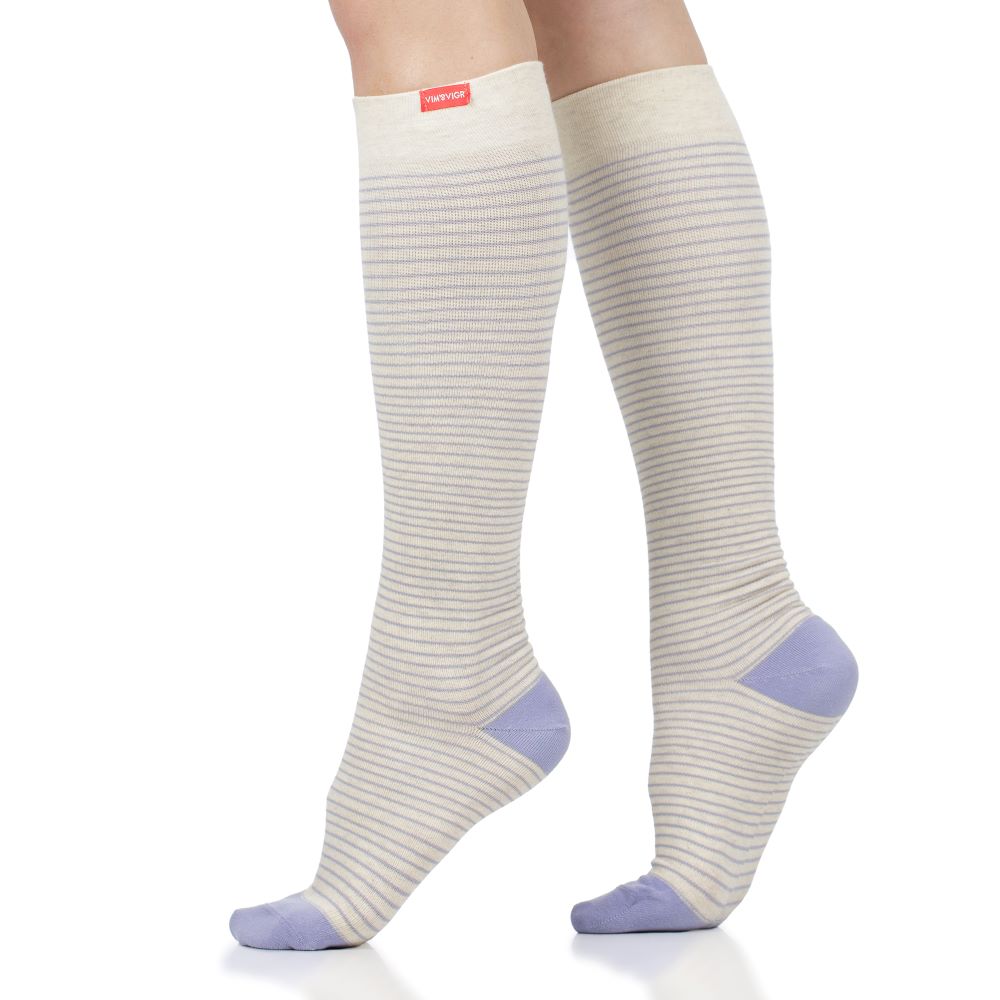
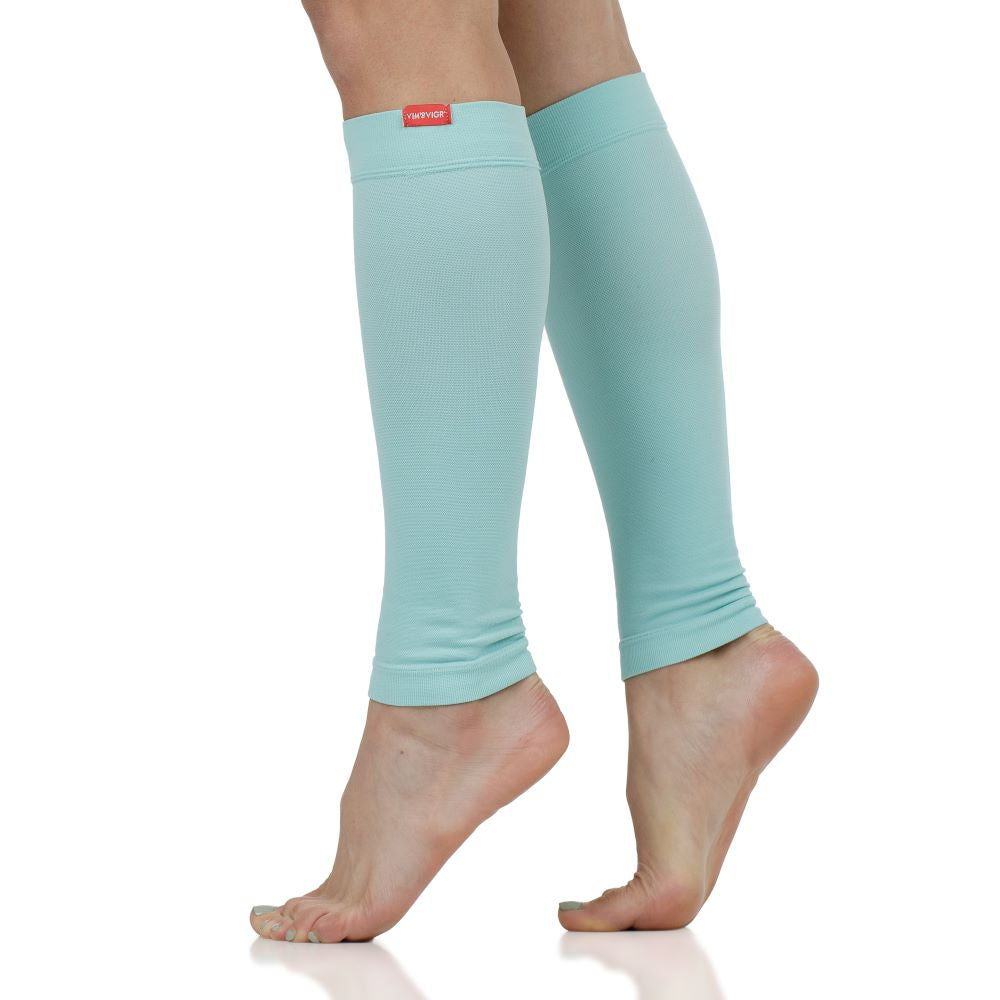
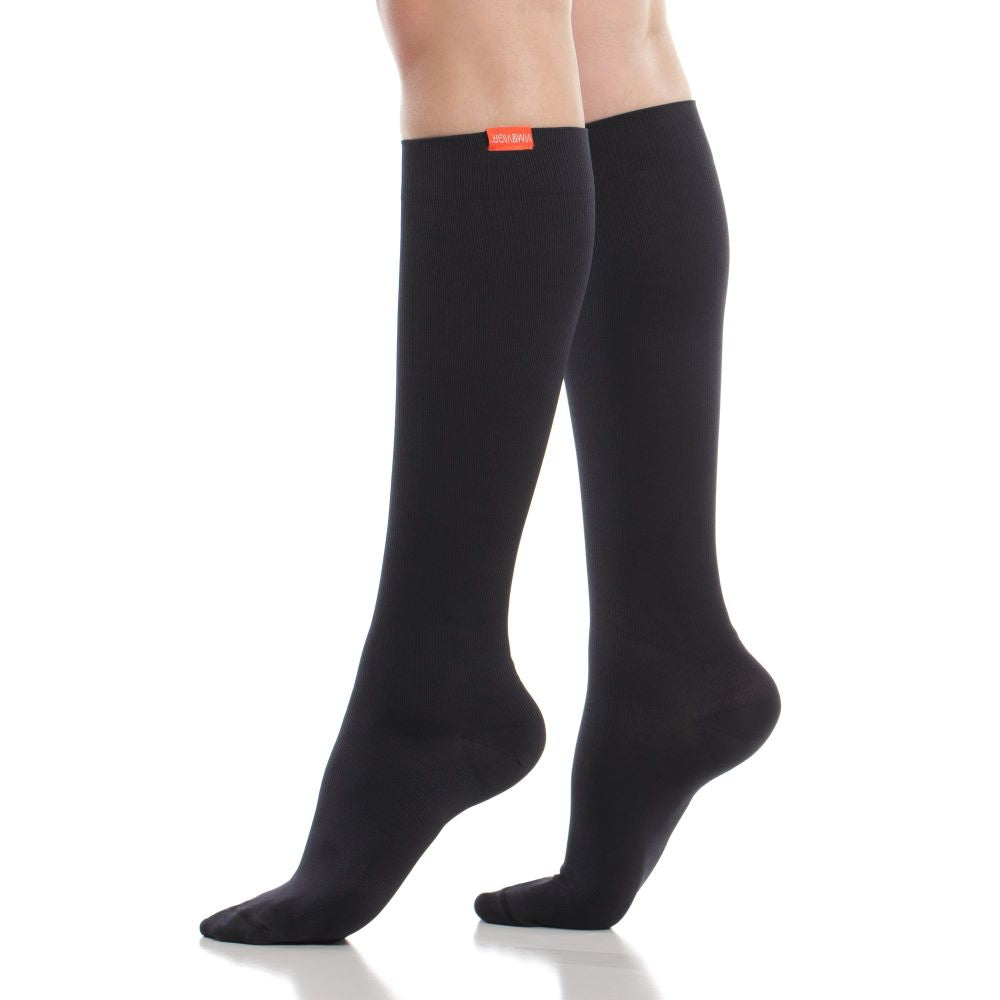







Leave a comment